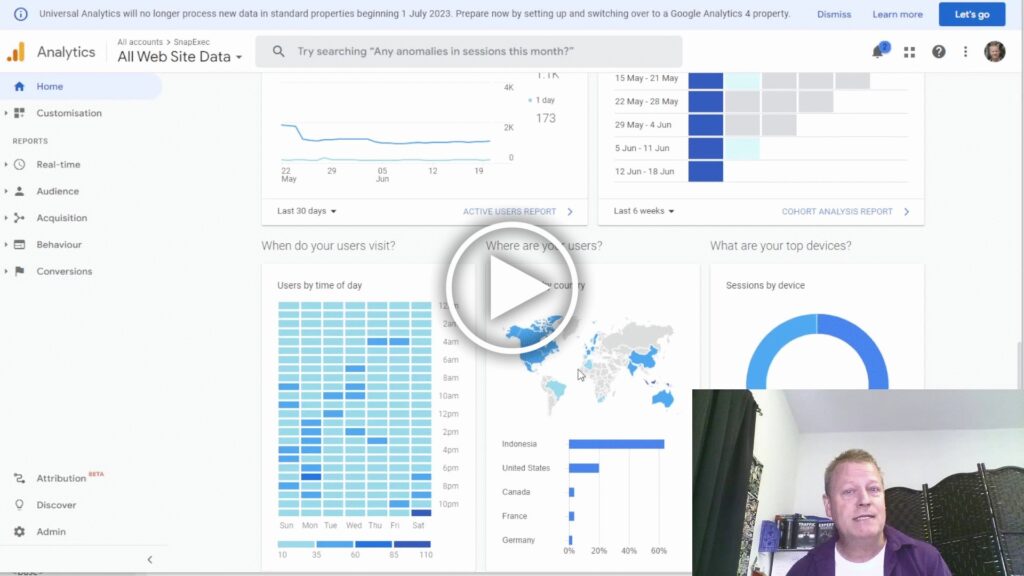How to Track the Important metrics on Social Media?
There are so many metrics that the gurus tell you to follow.
It’s true though that you need to be measuring things to know what you need to improve.
I know I started measuring anything I could but was especially attracted to what could be measured for me.
Unfortunately, on social media, since we don’t own the platform (the web site), we can’t measure things we want to automatically.
I did learn over time though that no matter what the platform, you need to track:
- Visits (what profile or account did you check out and when)
- Engagements (what posts did you comment or react on and who created them)
- Connections (who did you send messages to)
But, how do you go about tracking that since the platform doesn’t do it for you.
Before you go off and start tracking your social media interactions, let’s talk a little more about tracking and why it’s important.
What do you normally need to track in a business?
In most businesses, the bottom line is literally what you want to be tracking – your expenses and income.
I think most any entrepreneur would agree that tracking that makes the difference between a business and a hobby.
To be honest, I don’t do a great job at that kind of tracking and let my accountant do it.
It becomes pretty obvious then that if you spend hard cash on marketing, you’ll want to know if it’s paying for itself in new income.
This is why gurus will tell you how important it is to track your clicks, your impressions, your costs and your sales religiously.
I mean, that’s why the social platforms and ad platforms make tracking of those things easy for you.
The sales funnel
It also is super obvious to most entrepreneurs of what the sales funnel is – and I don’t mean a sales funnel page or web site, but the actually funnel to get sales.
What I mean is that it’s a number’s game.
Your sales funnel starts with your audience, then the leads, then the opt ins, then the trials, then the follow ups, then the sales and finally the up-sales and continuity programes.
Each of these “funnel levels” is a diminishing number – always – so you can then see a percentage of the previous number.
For example, say you have a 10% conversion from one level to the next and you have 100,000 people in your audience, it would look like this:

It should come as no surprise that to increase your income you can do one of two things: increase the audience size or increase the conversion rate.
The social media problem
If you’re like me, you don’t have thousands of dollars to invest in advertising on social media.
The cool thing is though that with personal branding and attraction marketing strategies, you don’t need to.
However, you must believe that your time is worth something otherwise, you’ll just aimlessly wander on social media and do what the platform loves you for without any tracking.
I mean, there is some value in doing that as the platform does track your activities but you don’t have access to that data in any meaningful way.
That’s why you need to take matters in your own hands and track your activities in a way that brings value to your time.
What do you need to track on Social Media?
All right, so getting back to the metrics you need to be tracking on social media.
Again, those are:
- Profile Visits
- Post engagements
- Contacting user
These metrics will allow you to know if it’s a good idea to reach out to someone and tell them about your offer.
Of course, the attraction marketing formula does teach you to let them come to you but we all know (at least if you’ve been doing this for a while) that you need to take action to get off the ground.
The thing they won’t tell you about attraction marketing is that it only works after you’ve gotten enough results that others can see before they’ll actually reach out to you.
And the only way to get those results is to do the reaching out yourself in the beginning.
Problem with that is that people don’t know you and will ignore you if you just blindly reach out to them.
So, you need to track your visits, engagements and contacts.
Only after you’ve engaged enough on their posts will contacting them be a positive experience after which it becomes possible to pass them through your funnel.
Conclusion
As you can see, it’s still about numbers but like any numbers game, it’s a lot easier if you don’t have to reach out to 1000s of people to get a single sale.
Imagine knowing that you visited a particular profile 20 times in the last 3 months and commented on 80 posts – wouldn’t you feel super confident that they will have a clue about you?
I mean, they saw your face in their notifications 80 times in the last months – it’s pretty sure they also checked your profile and that they saw at least some of your content.
Check out the video as I discuss more on this important topic.
P.S. I also have a tool called Active Group Users to help you with that. Get free account at https://activegroupusers.com
P.P.S. Don’t forget to share with your marketer friends too – they need this information too!
